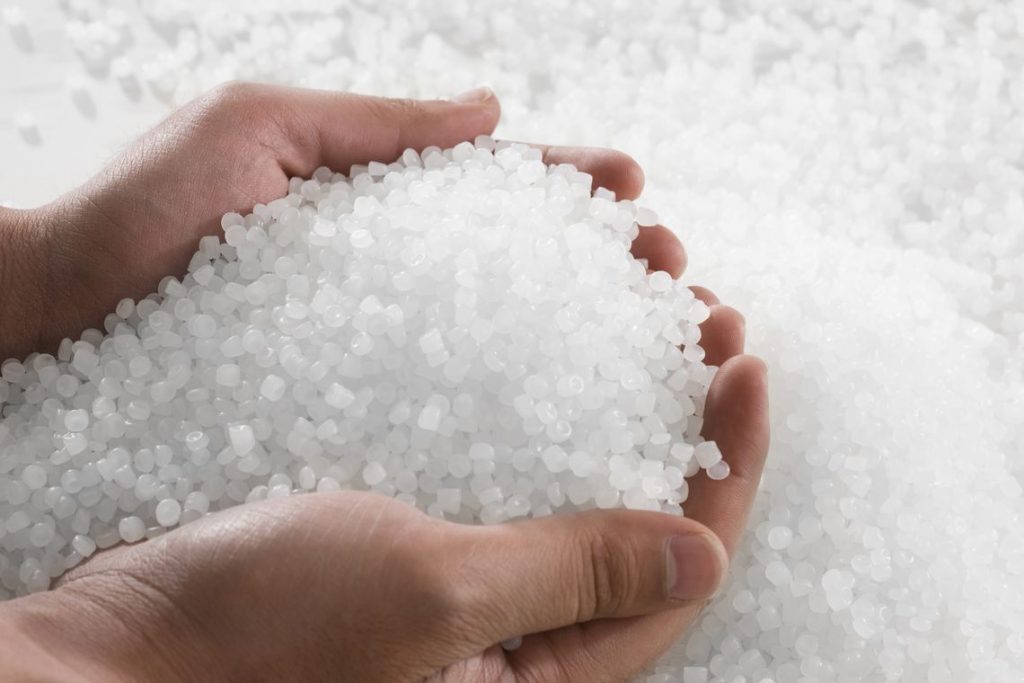
Polyethylene
Introduction
Compound 3840 is a significant grade of high-density polyethylene (HDPE) widely used across various industries such as water tanks, pressure pipes, engineering components, packaging, and rotational molding. Due to its excellent mechanical properties, chemical resistance, and ease of processing, Compound 3840 is favored for many demanding applications. However, its production faces a series of technical, economic, and environmental challenges that require meticulous management to ensure a high-quality, cost-effective product.
This article first explores the technical characteristics of Compound 3840, then discusses the key production challenges across different process stages. Finally, practical solutions for improving production are proposed.
Technical Characteristics of Compound 3840
Compound 3840 is typically based on high-density polyethylene (HDPE) and is characterized by:
-
High mechanical strength: Good impact and tensile strength, even at low temperatures
-
Thermal stability: Capable of withstanding processing temperatures without structural degradation
-
Chemical resistance: Resistant to a wide range of chemicals and solvents
-
Processability: Suitable for extrusion, rotational molding, injection molding, etc.
-
UV resistance: Enhanced with appropriate UV stabilizers
-
Good surface properties: Suitable for applications involving potable water and food contact
Polyethylene
Production Challenges of Compound 3840
1. Raw Material-Related Challenges
a) Variability in Resin Quality
HDPE resins come from different suppliers and vary in density, molecular weight distribution, branching, and impurities. Such variability can affect mechanical, thermal, and processing properties. For instance, a resin with higher molecular weight may increase melt viscosity, complicating processing.
b) Cost and Supply Issues
Global price fluctuations of polyethylene, transportation costs, sanctions, and import restrictions can make timely and affordable supply of raw materials difficult, impacting production schedules and costs.
c) Quality of Additives
Additives such as thermal stabilizers, UV inhibitors, masterbatches, and antioxidants must be compatible with the base resin. Poor quality or incompatible additives can reduce product lifespan, cause discoloration, cracking, and lower mechanical performance.
2. Formulation and Mixing Challenges
a) Uniform Dispersion of Additives
Non-uniform distribution of additives or color masterbatches in the polymer matrix can cause weak mechanical points, uneven coloration, and reduced UV resistance. This issue is more prominent when using high additive loading.
b) Optimizing Additive Combinations
Formulating the optimal mix of additives to balance physical, chemical, thermal, and aesthetic properties requires extensive testing and iteration. Some additives may interact adversely, accelerating degradation or reducing effectiveness.
c) Impact of Additives on Processability
Certain additives increase melt viscosity or alter flow behavior, making processing more difficult or causing inconsistent material flow. Precise control of additive type and concentration is essential.
Polyethylene
3. Production Process Challenges
a) Temperature and Extruder Parameters Control
Extrusion requires tight control of temperature profiles. Excessive heat leads to thermal degradation and discoloration, while insufficient heat causes incomplete melting and processing issues. Screw speed and feed rate must be optimized for stability.
b) Equipment Selection
Twin-screw extruders are generally preferred for better mixing and uniform additive dispersion but entail higher investment and maintenance costs.
c) Powder Preparation for Rotational Molding
When producing powder-grade compound for rotational molding, particle size distribution and uniformity are critical. Improper milling can cause processing difficulties, surface defects, and inconsistent product properties.
Polyethylene
4. Quality Control Challenges
a) Comprehensive and Frequent Testing
Quality control must include testing density, melt flow index, branching, additive levels, mechanical strength, color, thermal, and UV stability. Skipping these can lead to substandard or rejected batches.
b) Batch-to-Batch Consistency
Maintaining consistent color and physical properties across batches is essential to avoid customer dissatisfaction and loss of market share.
5. Economic and Efficiency Challenges
a) Energy Consumption Optimization
Compound production is energy-intensive, involving extrusion, milling, and drying equipment. Implementing heat recovery and energy-saving technologies can reduce costs.
b) Waste Reduction
Material waste arises from process miss adjustments, inconsistent raw materials, or operator errors. Effective waste recycling and reduction strategies are crucial.
c) Managing Additive Costs
Additives and masterbatches are expensive; their optimal usage reduces costs while maintaining performance.
Polyethylene
6. Environmental and Safety Challenges
a) Emission and Pollution Control
High-temperature processing may emit volatile organic compounds (VOCs), fumes, and particulate matter, requiring adequate ventilation and filtration systems.
b) Operator Safety
Handling high temperatures and chemicals mandates proper training and personal protective equipment (PPE).
c) Regulatory Compliance
Waste disposal, recycling, and use of additives must comply with environmental and health regulations. Additives for food or potable water contact applications must be certified.

Proposed Solutions for Improving Compound 3840 Production
-
Rigorous Raw Material Selection and Control
-
Partner with reputable suppliers with detailed certificates of analysis
-
Implement incoming quality control (IQC) procedures
-
-
Advanced Formulation and Lab Testing
-
Conduct thorough testing of additive combinations and small-scale trials
-
Optimize additive types and dosages for best performance
-
-
Modern Processing Technologies
-
Use twin-screw extruders with automated temperature and speed control
-
Employ precise milling systems for powder preparation with controlled particle size
-
-
Continuous Quality Monitoring and Documentation
-
Perform standardized tests on each production batch
-
Maintain detailed records to identify and rectify trends or deviations
-
-
Waste Minimization and Energy Efficiency
-
Introduce mechanical and chemical recycling for production scraps
-
Install heat recovery and energy management systems
-
-
Safety and Environmental Compliance
-
Train operators rigorously and provide adequate PPE
-
Use effective ventilation and filtering systems
-
Ensure additives meet all regulatory and certification requirements
-
Polyethylene
Conclusion
The production of Compound 3840 is a complex process demanding careful attention to raw material selection, additive formulation, precise process control, and rigorous quality assurance. While technical, economic, and environmental challenges exist, leveraging advanced technology, optimizing formulations, and adhering to best practices can significantly mitigate these issues. The result is a high-quality, mechanically robust, and cost-effective product capable of competing in domestic and international markets.